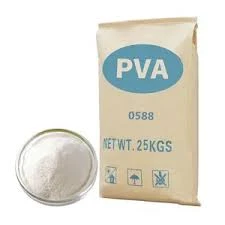HPMC for Cement Enhancing Performance and Sustainability in Construction
In the construction industry, the quest for materials that enhance durability, workability, and overall performance is an ever-evolving arena. One such material that has garnered attention is Hydroxypropyl Methylcellulose (HPMC), a cellulose ether commonly used in various applications, including cement-based products. This article delves into the role of HPMC in cement formulations and its significance in improving performance and sustainability.
What is HPMC?
Hydroxypropyl Methylcellulose (HPMC) is a non-ionic, water-soluble polymer derived from cellulose, a natural polymer found in the plant cell wall. HPMC is produced through the modification of cellulose fibers, resulting in a versatile compound that is widely utilized in pharmaceuticals, food products, and construction materials. When incorporated into cement mixes, HPMC serves multiple roles, enhancing characteristics such as workability, adhesion, and water retention.
Enhanced Workability and Application
One of the primary benefits of adding HPMC to cement-based materials is its ability to improve workability. Construction professionals often work under time constraints, and the ease of application can significantly affect project efficiency. HPMC enhances the flow of cement mixtures, allowing for smoother application and easier handling. This quality is particularly valuable in tile adhesives, plaster, and other materials requiring precise installation.
Moreover, HPMC provides optimal open time, which refers to the duration during which a cement-based adhesive remains workable after application. This feature allows tilers and contractors to position materials without the immediate pressure of the adhesive setting too quickly, thus reducing the risk of errors and waste.
Water Retention and Setting Time
Another crucial aspect of HPMC in cement formulations is its ability to retain water. Water retention is vital for ensuring that the hydration process occurs uniformly, leading to improved strength and durability in the final product. HPMC acts as a thickening agent, helping to maintain moisture within the mixture, which is essential, especially in hot or dry environmental conditions. This property helps to mitigate issues like cracking or inconsistent setting times, thus enhancing the overall quality of the cement-based materials.
hpmc for cement

The controlled setting time that HPMC helps achieve is also vital for project timelines. By adjusting the dosage of HPMC, manufacturers can modify how quickly a cement mix sets, allowing for greater flexibility in various construction applications.
Adhesion and Durability
HPMC enhances the adhesion properties of cement-based products, ensuring that materials bond effectively. This is particularly important in applications such as tile installations, where strong adhesion is crucial to prevent tiles from loosening or detaching over time. By improving the bond strength, HPMC contributes to the longevity and overall performance of the installation.
Additionally, the durability of cement products is significantly enhanced by HPMC. Its unique properties help to reduce the permeability of the cement structure, making it more resistant to environmental factors, such as moisture penetration and freeze-thaw cycles. This resilience extends the lifespan of structures, minimizing the need for repairs and replacements, which in turn contributes to the sustainability of construction practices.
Sustainability Considerations
In an era where sustainable construction practices are increasingly prioritized, the use of HPMC aligns well with the industry's shift toward environmentally-friendly solutions. HPMC is derived from renewable resources, and its incorporation into cement formulations can lead to more sustainable construction processes. Furthermore, its ability to enhance the performance and durability of cement products means that buildings may require less material over time, reducing waste and resource consumption.
Moreover, by promoting longevity and reducing maintenance needs, HPMC contributes to sustainable building practices, ensuring that structures remain functional and durable with minimal environmental impact.
Conclusion
In conclusion, Hydroxypropyl Methylcellulose (HPMC) plays a pivotal role in enhancing the performance of cement-based materials. From improving workability and water retention to increasing adhesion and durability, HPMC serves as a vital additive in modern construction. As the industry continues to prioritize sustainability, HPMC’s application aligns well with the mission to build resilient structures while minimizing environmental impact. Through innovative uses of materials like HPMC, the future of construction looks promising, combining enhanced performance with ecological responsibility.
-
Rdp that The Revolutionary Polymer Powder Transforming Modern Construction MaterialsNewsAug.11,2025
-
Hpmc Powder that Versatile Additive for Detergents and Personal CareNewsAug.11,2025
-
Hpmc Hydroxypropyl Methylcellulose that Essential Building Material Additive from Shijiazhuang Gaocheng YongfengNewsAug.11,2025
-
Hydroxypropyl Methyl Cellulos Hpmc that Essential for Construction ApplicationsNewsAug.11,2025
-
Mhec Powder that Revolutionizing Construction Chemistry with Cellulose Ether SolutionsNewsAug.11,2025
-
Industri Hpmc that The Global Backbone of Advanced ConstructionNewsAug.11,2025




